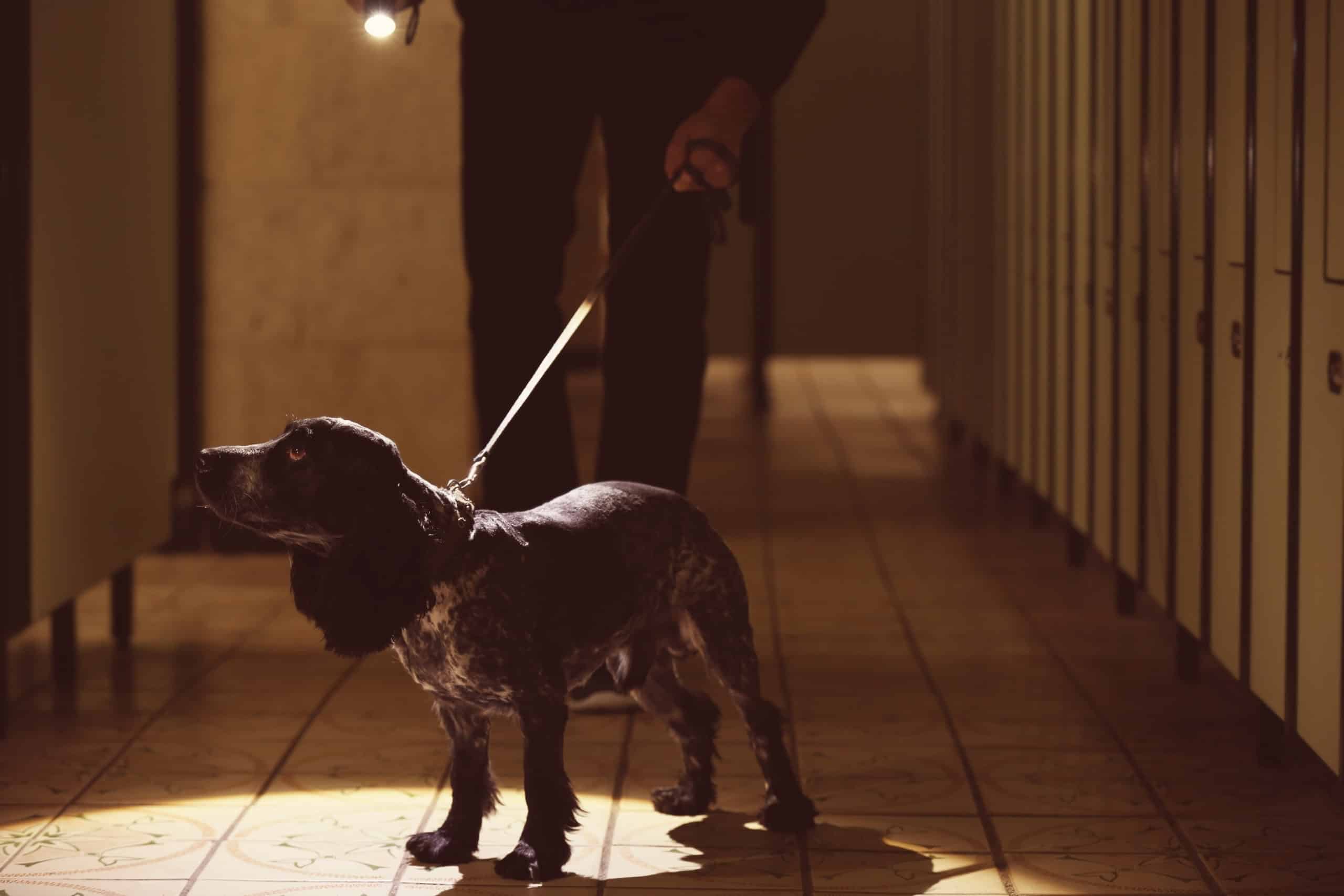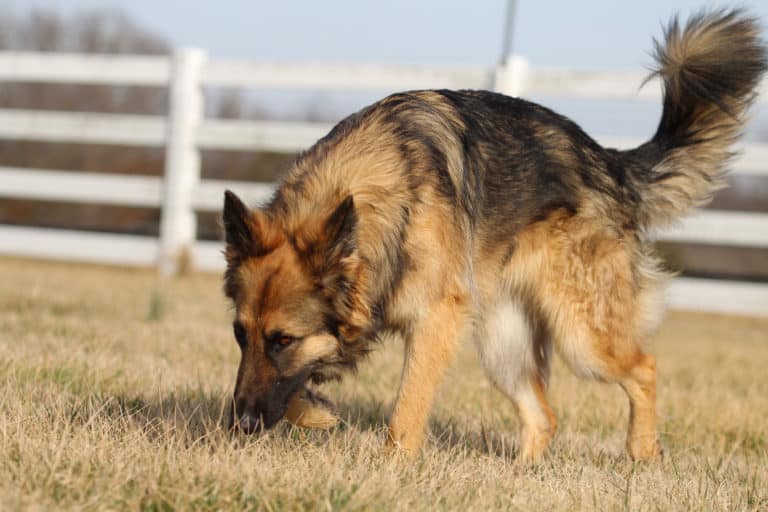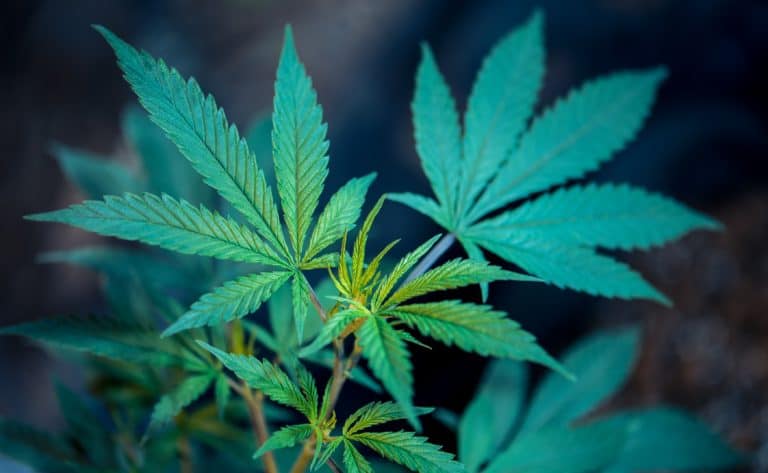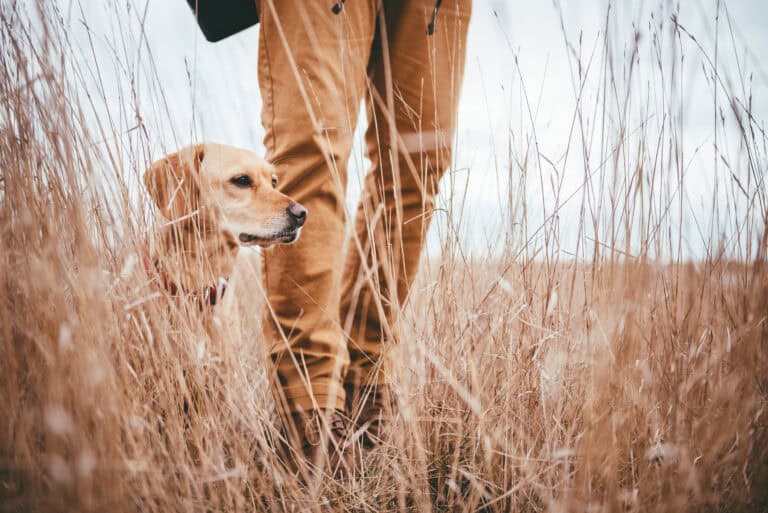Narcotics detection dogs serve a valuable role in American society, as well as in many other countries around the world. When considering which settings are most common for drug dog deployments, many people visualize high speed car chases and underground sting operations. Although scenarios like these have been glamorized by the film industry and do occasionally occur, the majority of narcotics finds happen in significantly more common settings.
Whether in a car, home, business, school, or any number of other locations, narcotics are found by specially trained detection dogs on a regular basis. One of the most concerning places where narcotics are often found is in middle and high schools. Unfortunately, the prevalence of illicit substance abuse in schools increased significantly over the previous 20 years. According to the National Center for Drug Abuse Statistics, 2.08 million of 12-17 year olds in the United States reported using drugs in the last month. At least one in eight teenagers report abusing an illicit substance in the last year. By the time they are in 12th grade, 46.6% of teenagers have tried illicit drugs.
The use of addictive illicit substances, especially in schools, has been a widespread concern in America for years. With numbers rising annually until 2021 (when many schools closed after the COVID-19 pandemic), drug use – especially opioids – was officially declared a public health emergency in the United States. It has become progressively easier for many school aged children to access illicit substances, which has contributed immensely to the startling numbers mentioned above.
Ease of access combined with a lack of effective ability to regulate drugs in school contributes significantly to these rising numbers. Many students have learned how to effectively hide narcotics, which enables them to continue using them while also creating the opportunity to introduce them to others.
Where do narcotics detection dogs come in?
Dogs have an incredible sense of smell, boasting between 115-300 million olfactory receptors (depending on the dog), a highly refined olfactory system allowing them to sort and follow specific odors, and a very large olfactory lobe where all of the information received from their olfactory system is processed. With a body that is virtually designed to hunt, dogs offer humans a method of detecting otherwise undetectable odors, including illegal substances such as narcotics. A well-trained narcotics dog can detect the odor of trained substances through physical barriers, such as bags or lockers, and oftentimes can detect them from many feet away.
Most school aged children are not regularly screened for drug possession or use, and the large number of students in many schools would make it virtually impossible to scan every student’s belongings regularly to determine if they had brought drugs to school. Apart from the logistical impracticalities, introducing measures like these would be highly invasive and stressful for students and staff. Random drug testing can be embarrassing, is considered borderline unethical by many, and is only legal for students who are participating in sports or extracurricular activities. Unfortunately, neither of the aforementioned measures for detecting drug use have been proven to deter students from using drugs in schools, nor are they reliably effective in detecting the presence of narcotics. There are many techniques that students can use to conceal illicit substances, which creates a large potential margin of error when using more traditional methods of drug detection in schools.
In order to be effective, schools require a method of detecting illicit substances which is discreet, fast, non-invasive yet highly effective. This is where narcotics detection dogs become a significant asset in academic institutions.

What are the advantages of using narcotics detection dogs in schools?
Detection dogs are used regularly in a variety of settings where large human populations are present and moving quickly. Oftentimes the surrounding environment which these dogs are working in is also changing rapidly. Many times, in these situations, accuracy is paramount for the safety of the public. The reason why so many airports, concerts, major league sporting competitions and other significant public events use detection dogs is because they have been proven to work in these difficult environments while maintaining a very high rate of accuracy.
Narcotics detection dogs possess a number of unique benefits which make them one of the most valuable methods for accurately detecting illicit substances in a variety of settings, such as schools.
- Narcotics dogs are noninvasive. Unlike other detection methods such as drug testing, possession scans and random searches, detection dogs do not require that every locker be opened or individual bags be sorted through. Dogs are able to detect target odors through barriers, which means that they can do so in a manner that is discreet and non-invasive.
- Narcotics dogs are efficient. Speed of work is a significant benefit of using a detection dog to scan areas for target odors. Although it is still important that a detection dog is deployed methodically during searches, a well-trained K9 will use its highly refined olfactory system to seek out illicit substances while quickly clearing both small and large areas. This can be especially beneficial in very large schools where a great deal of area must be covered.
- Narcotics dogs are discreet. Since detection dogs are often able to detect target odors from a distance, they do not need to sniff every locker or bag individually to be effective. Dogs will often simply walk by an area when working, without making an effort to be dramatic when they detect the target odor. When they do identify an odor, their indication – or TFR (trained final response) – will notify their handler of the presence of the target odor, even if it may not be immediately obvious to others present.
- Narcotics dogs are cost effective. A great deal of time and finances can be required to put an effective drug detection process in place. Property scans are extremely time consuming, often requiring additional staff or overtime – and they are frequently still ineffective. A single narcotics detection dog is able to accurately scan entire areas and specific belongings. This enables schools to avoid needlessly paying for mass laboratory testing or implementing other more expensive and time-consuming measures.
- Narcotics dogs minimize staff stress. Getting school staff involved in drug detection efforts can be overwhelming and stressful for them. Staff often makes an effort to cultivate pleasant relationships based on trust with their students, and asking them to participate in efforts to find drug users can be very stressful. Asking staff to confront individual students presumed to be in possession of illicit substances for drug testing or scans can damage trust while also placing a great deal of undue pressure on the staff member. By implementing the use of a narcotics detection dog, staff can remain removed from the process.
- Narcotics dogs are a deterrent. The mere presence of a narcotics detection dog acts as an effective deterrent to students contemplating bringing substances into schools. When narcotics dogs are used for regular, random detection efforts in educational establishments, their accuracy and reputation makes anyone think twice before bringing banned substances with them. The same tactics have seen reduced usage of drugs and other illegal substances at airports and other public settings.
Are there dangers associated with not implementing drug detection protocols in schools?
Although many Americans acknowledge that drug use has become a serious problem in many schools, the specifics regarding the actual damage that these substances do to students is less known.
According to the National Center for Drug Abuse Statistics, overdose deaths among 15 to 24 year olds continues to rise, with 4,777 deaths in this age range occurring from overdose in 2019. Opioids contributed greatly to this number, followed by heroin and cocaine overdoses. Although this is perhaps the most severe concern associated with narcotics use in young people, teenagers who use drugs face a variety of other concerns as well. Drug use greatly increases the risk that a high school student will drop out of school prior to graduation, consequently eliminating their chances of attending and graduating college. Drug users statistically have lower grades and higher absence rates than non-drug users. High-risk substance use is another serious concern in schools, as it increases an individual’s risk of infection or blood-borne disease, becoming involved in physical violence and engaging in a number of other risky behaviors. High school students who use drugs also demonstrate an increased risk of suicide and depression, as well as engaging in future criminal activity if not effectively rehabilitated.
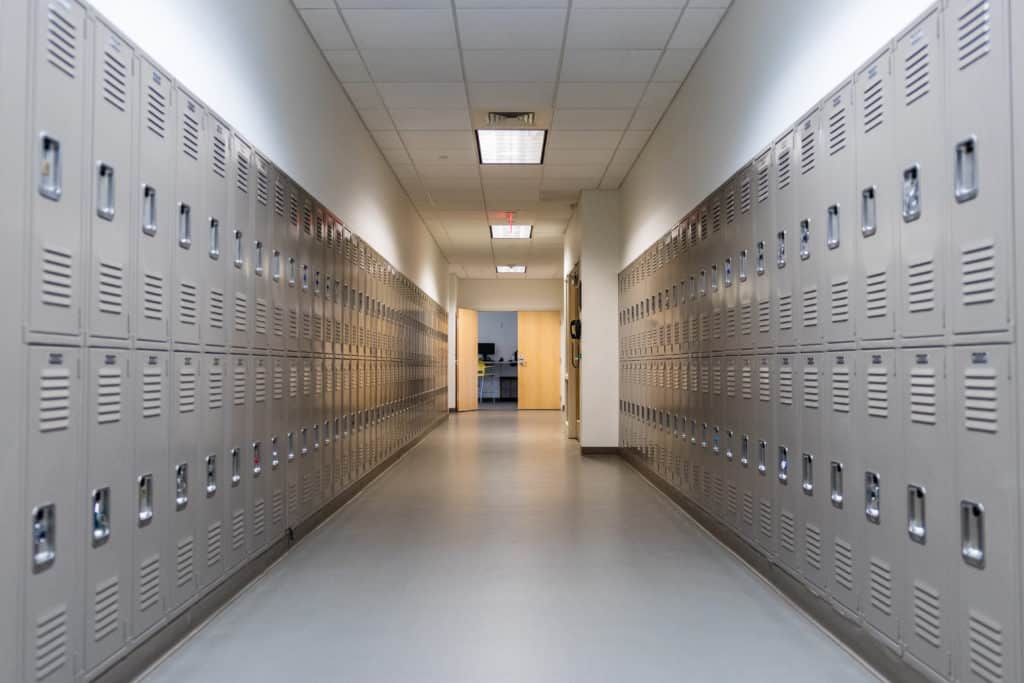
In conclusion
As we have explored in this article, there are several reasons why using narcotics detection dogs in schools is beneficial. These dogs are quick, effective, discreet and highly accurate, which can significantly improve the chances that a school can deal with a drug issue before it becomes more widespread. Narcotics detection dogs can be the difference between a student receiving the help that they need to safely move forward with their life, and a student falling victim to one or more of the many dangers that drug use introduces.
At Black Hills K9 LLC, protecting the future generations of America is paramount to us, and as such, this is a topic we are very passionate about. Coming in early 2024, we will offer a private asset for narcotics detection – this service will be available to schools and law enforcement across South Dakota, Wyoming and Nebraska. Our highly trained detection dog-handler team will travel to your location and conduct a comprehensive sweep of the facility. We work with your specific needs to ensure that you are getting the most out of our service. Black Hills K9 LLC will provide experience and insight for optimizing your search. Additionally, we can act as a subject matter expert and resource for school boards, administrators, school resource officers, and law enforcement agencies looking to create policies for effective use of detection K9s based on current data and best practices.
Black Hills K9 LLC offers a variety of detection dog training services as well as other Working K9 services for law enforcement, military, and search and rescue agencies. Our goal is to produce some of the best detection dogs in the industry. Keep an eye out for our next blog article in which we will discuss the best breeds for use in detection dog training.

